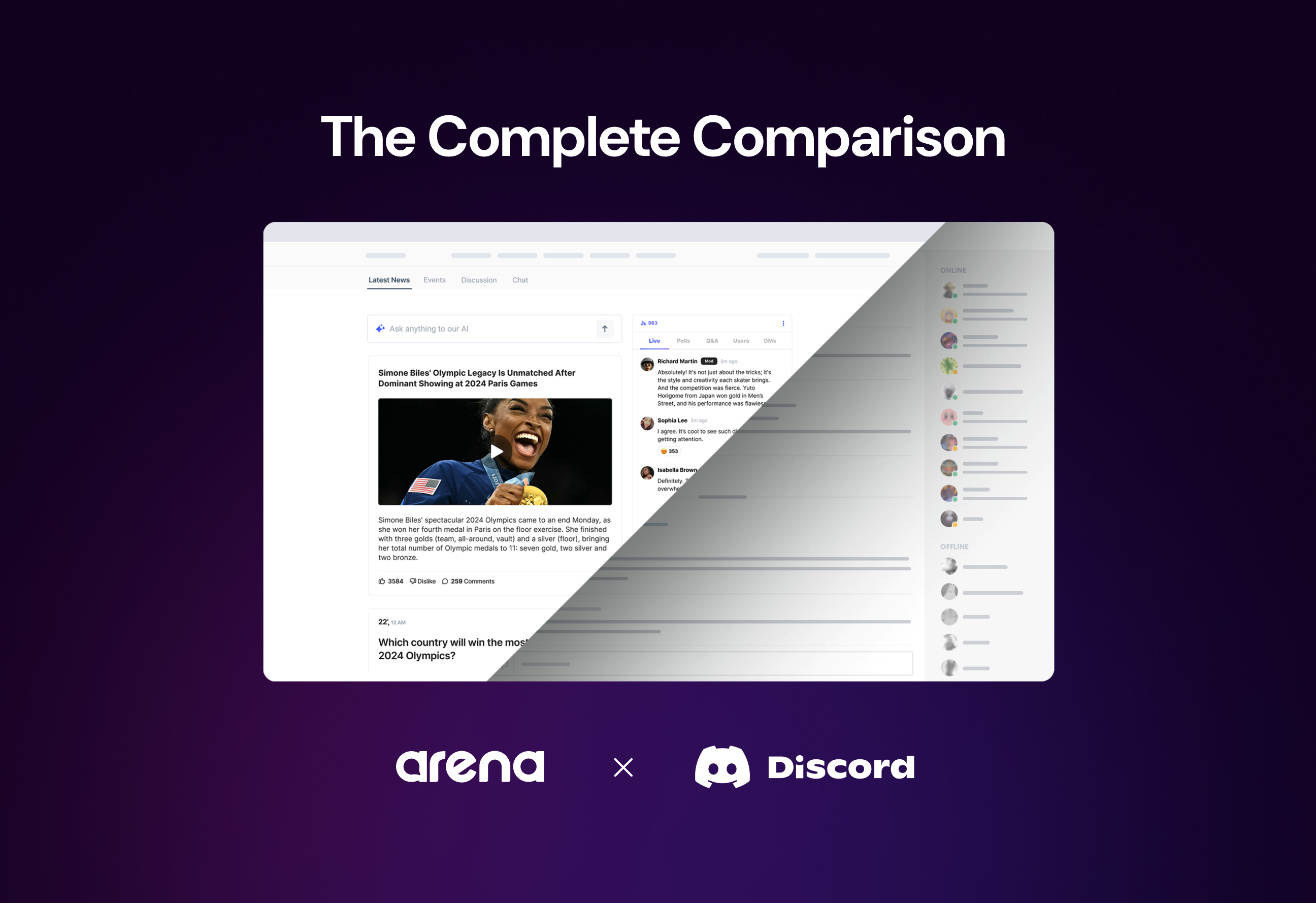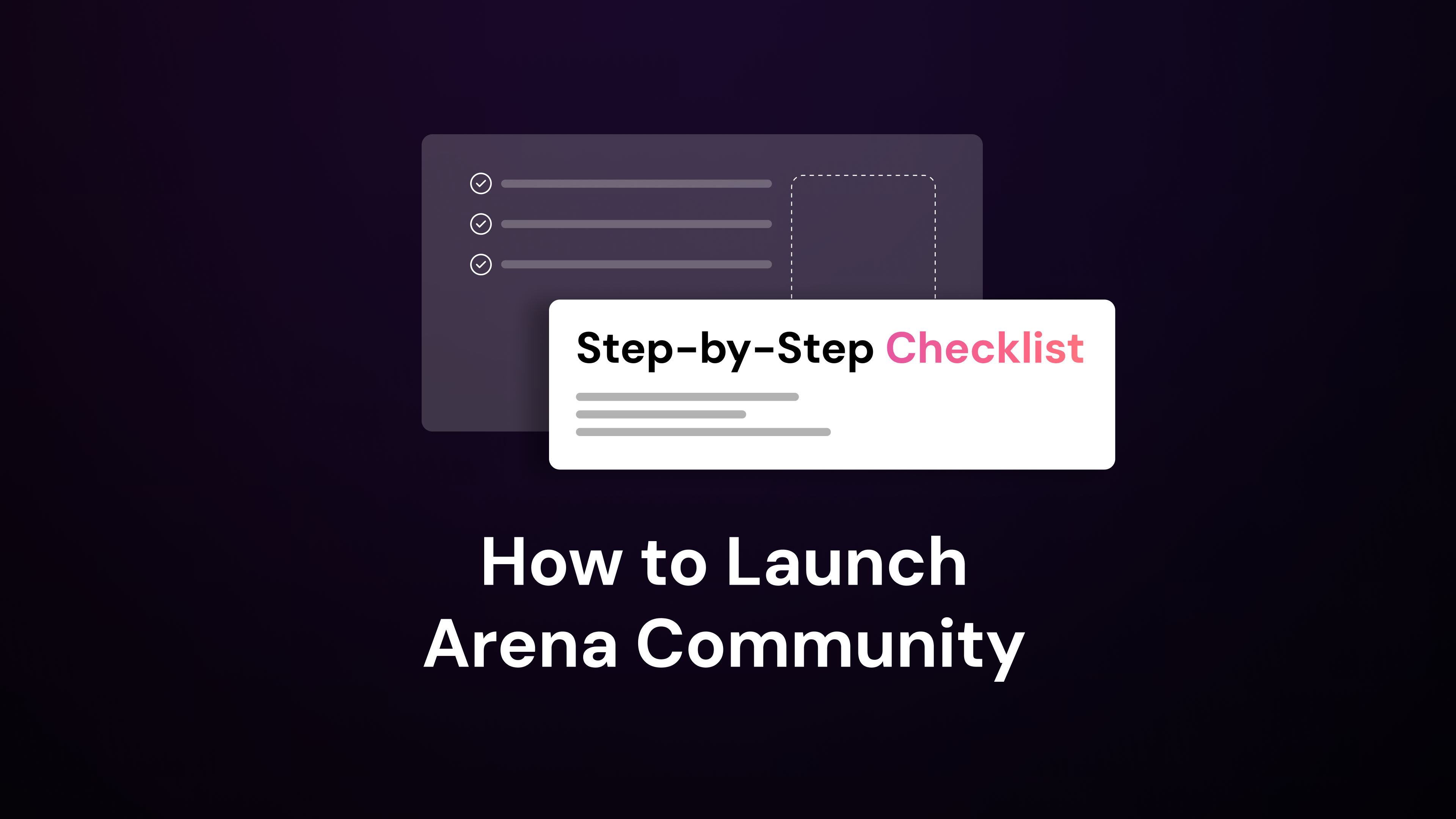Enhance your sports brand by developing a community branding strategy tailored for the sports industry that emphasizes building safe online communities. Engaging fans on your own digital platforms is crucial for growth and building a strong online presence in the competitive sports industry. Implementing approaches that drive engagement helps your brand stand out. Following essential community safety tips ensures a secure environment for your fans.
Key Elements of a Sports Community Branding Strategy
Building an effective sports community branding strategy involves aligning your initiatives with your brand values and creating a clear action plan.
Align Community Initiatives with Brand Values
Ensure your community efforts reflect your organization’s core values and objectives. This authentic alignment strengthens your brand identity and builds trust with your audience. Collaborate with athletes and influencers who share your values to amplify your message. Partnering with aligned influencers can earn an average of $6 for every $1 spent, according to Ramotion.
Highlight unique aspects of your community, such as local culture or history, to create meaningful connections without diluting your brand’s essence. This approach can help in building thriving online communities that resonate with your audience.
Develop a Clear Community Plan
Create a comprehensive community plan to provide direction and consistency in your branding efforts. Set specific goals and objectives that resonate with your brand values. Outline the programs you’ll deliver and identify potential partners. Define your target groups for each initiative and establish desired outcomes along with metrics to measure impact.
As recommended by Pressbooks, your community plan should include:
- Goals and Objectives: Clearly state what you aim to achieve.
- Program Types: Detail the initiatives you’ll implement.
- Collaboration Partners: Identify organizations or individuals to partner with.
- Target Groups: Specify the audiences for each program.
- Outcomes and Metrics: Define what success looks like and how you’ll measure it.
Having a clear plan helps you stay focused and makes it easier to evaluate and refine your community programs over time.
How to Implement a Sports Community Branding Strategy
Implementing a sports community branding strategy involves deliberate actions to engage your audience and foster connections.
Engage in Strategic Partnerships
Collaborate with local organizations, nonprofits, and stakeholders to expand your reach. These partnerships can lead to more effective community programs by pooling resources and expertise. Aligning with local sports clubs or educational institutions can amplify your initiatives and make them more relevant. Additionally, employing effective community engagement tactics can further enhance the impact of your partnerships.
- Partner with Athletes and Influencers: Athletes and influencers can promote your brand authentically. Over 70% of Gen Z and millennials follow influencers online.
- Host Events and Activations: Create memorable experiences through events that allow fans to connect with your brand personally.
Communicate Community Impact
Showcase your community involvement to highlight the positive impact your organization makes. This enhances your reputation and distinguishes you from others.
- Utilize Digital Platforms: Share engaging content like videos and behind-the-scenes clips on social media.
- Use Storytelling: Highlight the cultural and social implications of your initiatives to create emotional connections with fans.
For example, programs like the Penrith Panthers’ “Panthers on the Prowl” support children through initiatives promoting healthy lifestyles, reinforcing their commitment to the community.
Evaluate and Iterate Community Programs
Implement evaluation procedures to measure the effectiveness of your community initiatives. Use this data to make informed decisions and improvements. Incorporating effective growth tactics can enhance the impact of your programs.
- Set Clear Metrics: Identify key indicators such as engagement rates, participation levels, and community feedback.
- Use Empirical Research: Collect data before and after programs to assess impact, as seen with the Her Sport Her Way Grant Program in New South Wales.
Regularly analyzing these metrics allows you to refine your programs, ensuring they remain relevant and effective in meeting community needs.
Sporting Events for Brand Building
Hosting sporting events is an effective way to build your brand by creating connections with your audience and increasing your community’s visibility.
Host Global and Local Sporting Events
Global events like the Olympics or major international tournaments can transform a city’s image and showcase it on the world stage. The upcoming Paris 2024 Olympics aims to position the city as innovative and sustainable. When the Copa America was held in the U.S., cities like Miami and Seattle highlighted their unique cultures internationally.
In smaller communities, hosting local and youth sports tournaments can significantly boost your brand. These events attract visitors, stimulate the local economy, and increase visibility. Organizing youth tournaments promotes sports and youth development while showcasing your community’s values.
Showcase Community Values and Hospitality
Sporting events are opportunities to highlight what makes your community special. By emphasizing unique local features, history, and culture, you create authentic experiences for visitors. Deliver exceptional hospitality and a family-friendly atmosphere to make lasting impressions.
East Peoria, Illinois, is a prime example. The city has branded itself as a youth sports hub by hosting regional and national tournaments at its EastSide Centre (source). It attracts families from across the region, emphasizing its welcoming, family-friendly environment and top-tier facilities.
Long-Term Community Relationships
Building lasting relationships with your fans is essential for sustained success in the sports industry. By focusing on strategies that grow revenue and engagement, you can strengthen these relationships. Implementing effective monetization strategies can also enhance your brand’s sustainability.
Cultivate Brand Ambassadors Within the Community
Engage with passionate fans who are enthusiastic about your brand and involve them as brand ambassadors. Develop programs that recognize and reward these dedicated community members. Offer exclusive benefits, such as behind-the-scenes access, special merchandise, or direct interactions with team members. Provide ambassadors with resources to share your brand message effectively. Feature their stories and contributions within your community platforms to acknowledge their support and encourage others to participate.
Develop Personalized Fan Experiences
Use data and insights to tailor experiences that resonate with individual fans. Offer personalized content based on their interests and engagement history. Implement loyalty programs that reward fans for their involvement, such as point systems or tiered membership benefits. Create opportunities for exclusive experiences, like meet-and-greets, personalized messages from athletes, or access to premium content. Making each fan feel connected enhances their satisfaction and strengthens their attachment to your brand.
Digital Platforms for Community Engagement
To build strong connections with fans, use digital platforms that facilitate interaction and engagement, such as an AI-powered community on your website. This can help you break free from social media dependencies and foster deeper connections with your audience.
Utilize Social Media and Digital Channels
Social media platforms offer direct communication with fans. Platforms like Facebook, Instagram, and Twitter let you engage with your audience in real time. Social media marketing has one of the highest returns on investment, averaging 95% (Ramotion Sports Branding).
To maximize engagement:
- Collaborate with Influencers and Athletes: Partner with sports personalities or content creators to reach their engaged followers authentically.
- Use Branded Hashtags: Encourage fans to participate in conversations and share their experiences using your branded hashtags.
- Implement Targeted Advertising: Use advanced targeting options to reach specific audience segments effectively.
- Monitor and Adjust Strategies: Use social media analytics tools to track engagement and refine your approach.
Create Engaging Content Across Platforms
Compelling content keeps your community active and encourages participation across digital channels.
- Encourage User-Generated Content: Prompt fans to share their own photos, videos, or stories related to your brand. This fosters a sense of ownership and community.
- Produce Interactive Experiences: Incorporate chat polls and Q&A, quizzes, and interactive videos to make content more engaging.
- Leverage Video Marketing: Share behind-the-scenes footage, athlete interviews, and highlights to provide exclusive insights. Live streaming events can enhance real-time engagement.
- Align Content with Key Moments: Time your content strategically around sports events, seasons, or off-season periods when fans are eager for updates.
- Utilize AI content creation tools: Leverage artificial intelligence to generate personalized and dynamic content across platforms.
Consider implementing tools such as AI and live chat to facilitate real-time engagement. Arena Community provides all the necessary tools for creating, managing and scaling a successful community for any kind of sports industry.
By consistently delivering engaging content and using social media effectively, you can foster a vibrant online community that strengthens brand loyalty and enhances fan experiences.
How to Measure Success in Sports Community Branding
Measuring the success of your sports community branding initiatives is essential to understand their impact and refine your strategy.
Identify Key Metrics for Community Engagement
To effectively track audience engagement, focus on metrics that reflect community involvement:
- Engagement Rates: Monitor likes, comments, shares, and interactions on your platforms.
- Community Growth: Track the increase in community members over time to assess the reach of your activities.
- Content Performance: Analyze which content resonates by examining views, shares, and engagement levels.
- Conversion Rates: Measure actions like ticket sales or merchandise purchases resulting from your community initiatives.
Analyze Fan Loyalty and Participation
Understanding fan loyalty helps assess the long-term success of your branding:
- Brand Loyalty: Assess repeat engagement and retention rates.
- Fan Retention: Evaluate the number of active community members over time.
- Sentiment Analysis: Use feedback and social media mentions to understand fans’ perceptions.
- User-Generated Content: Encourage and monitor content created by fans, reflecting high levels of engagement and loyalty.
Regularly reviewing these metrics allows you to identify successes and areas for improvement. Focusing on both quantitative data and fan feedback helps tailor your community branding strategy to better meet the needs of your audience.
By integrating these strategies and continuously engaging with your community, you can enhance your sports brand, build a loyal fan base, and strengthen your digital presence. Embracing a comprehensive community branding approach fosters deeper fan engagement and drives growth in the sports industry.
Ready to see the impact of an effective brand community on your bottom line? Sign up now at Arena and start leveraging our powerful features to boost engagement and retention. Join thousands of brands that trust Arena to turn visitors into loyal customers.



